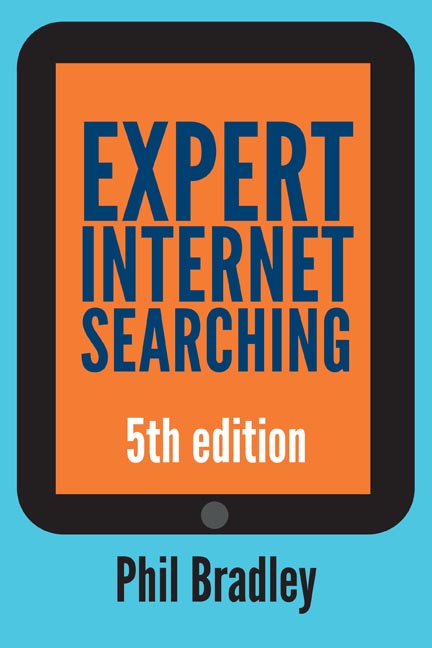Book contents
- Frontmatter
- Contents
- List of figures
- Preface
- Acknowledgements
- 1 An introduction to the internet
- 2 An introduction to search engines
- 3 The world according to Google
- 4 Other free-text search engines
- 5 Directory, clustering and similarity search engines
- 6 Multi- and meta-search engines
- 7 Social media search engines
- 8 Visual and image search engines
- 9 People-based resources
- 10 News-based search engines
- 11 Multimedia search engines
- 12 Specialised search engines
- 13 Hints, tips and the future
- Index
1 - An introduction to the internet
Published online by Cambridge University Press: 09 June 2018
- Frontmatter
- Contents
- List of figures
- Preface
- Acknowledgements
- 1 An introduction to the internet
- 2 An introduction to search engines
- 3 The world according to Google
- 4 Other free-text search engines
- 5 Directory, clustering and similarity search engines
- 6 Multi- and meta-search engines
- 7 Social media search engines
- 8 Visual and image search engines
- 9 People-based resources
- 10 News-based search engines
- 11 Multimedia search engines
- 12 Specialised search engines
- 13 Hints, tips and the future
- Index
Summary
Introduction
When writing a new edition of an existing book, one of the decisions that you have to take is how much to change, and how much to keep the same. In all of the previous editions of this title I've included an introduction to the internet, and clearly I'm doing so again – why change a winning formula? However in truth, it's not really about that, it's rather more to do with the fact that I strongly believe that an introduction really IS required. As you might imagine, I talk to people all of the time about the internet, and the majority of them are not internet or information professionals, they are the average person on the street, or in my case, out walking their dogs in the park. Their knowledge of the internet is about as limited as my knowledge of the way in which the internal combustion engine works, which is to say, limited in the extreme. Of course, if you're someone who works with the internet on a regular, daily basis you're probably far more aware of the internet and what it does and doesn't do. However, it's always a good idea to have a refresher every now and then, and even if you read this chapter in a previous edition of the book it's worth scanning through it again because information does change year on year.
What doesn't change, however, is the old time-worn phrase ‘It's all on Google’. Having spent some time in 2016 looking at two big political events, the British European Union referendum and the American Presidential election, it's very easy to see that not only is it not all on Google but Google may very well just provide you with the information that it thinks you want to see, limiting your choice even further than what is available in its databases.
- Type
- Chapter
- Information
- Expert Internet Searching , pp. 1 - 20Publisher: FacetPrint publication year: 2017



